Your holiday shopping guide for safe, non-toxic gifts
Find fun, affordable gifts—minus the hidden chemicals that could put loved ones’ health at risk.
Updated on December 14, 2023

In the rush of the holiday season, finding the perfect gift for friends and loved ones is often a challenge. To get your holiday shopping done fast, it can be tempting to grab the first items you see on the shelves or online. The fact is, though, certain go-to gifts can come with surprising health risks, depending on their quality and materials.
Here’s how to identify hidden health hazards associated with popular product categories—plus how to find affordable, non-toxic gifts for everyone on your list.
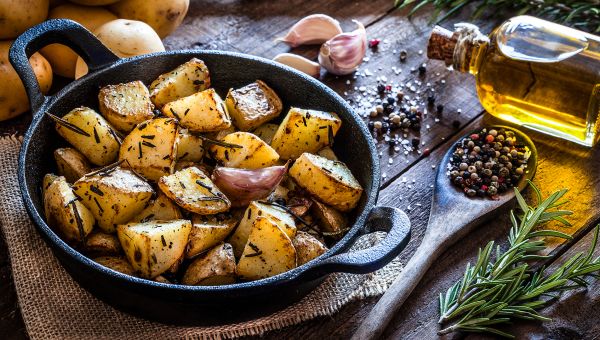
For the next top chef: Chemical-free pans built to last
Kitchen gift sets are everywhere this time of year. Just remember to look deeper than the packaging when making your selection. It’s helpful to know what the product is made from, rather than just the ingredients it’s “free from,” says Kristie Trousdale, MPH, Deputy Director of the Children’s Environmental Health Network (CEHN) in Washington D.C. CEHN is a nonprofit that works to ensure all children have healthy places to live, learn, and play, clean air to breathe, and access to safe food, water, and toys.
“You want to avoid nonstick cookware because nonstick products tend to contain ‘forever chemicals’ like PFAS,” she says. PFAS (polyfluoroalkyl substances) are considered “forever chemicals” because once they enter an environment—or a person’s body—it’s nearly impossible to get rid of them. Among several conditions, PFAS have been linked to low birth weight in babies, developmental delays in children, high blood pressure in pregnant people, and increased risk of certain cancers.
“Just know that ‘PFAS-free’ is not a catch-all label for every hazardous substance,” notes Trousdale. “When you see ‘PFAS-free,’ you cannot rest assured that the product is non-toxic.”
The swap: “Choose cookware made from cast iron or stainless steel,” Trousdale recommends. People who use nonstick items and are not ready to replace them should at least pay close attention to when they start to chip or scratch: “When you see scratches, get rid of the item,” she says. “That’s when it’s most likely to release PFAS from the nonstick coating into your food.”
Shoppers’ pro tip: Worried about missing nonstick? When cared for properly, cast-iron cookware develops a natural, long-lasting nonstick quality—minus the harmful chemicals. It’s simple to season cast-iron cookware with little more than cooking oil. Cast iron is also generally affordable. A 12-inch skillet costs around $30, a worthy investment since companies will often guarantee it for 100+ years. In fact, many households have cast-iron pans that have been passed down for generations. To save big, look for “factory seconds.” These are slightly imperfect items sold at large markdowns.
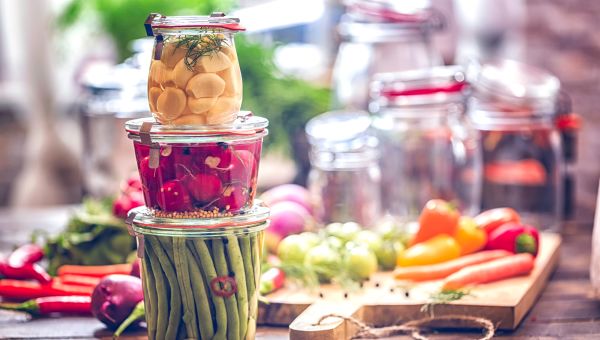
For the foodie: Smart kitchen storage
Busy households tend to accumulate heaps of plastic storage containers. This isn’t just a source of clutter—plastic may contain harmful chemicals that can enter your food.
Many plastic containers are made using bisphenol A, commonly known as BPA. The chemical is also found in items such as food can linings and water bottles. Exposure to BPA has been linked to possible developmental and behavioral issues in children, as well as type 2 diabetes, heart disease, and high blood pressure in adults.
The swap: Help your loved ones purge their plastic—and protect their health—with a set of versatile glass containers. “Glass lets you pop food in the microwave, serve it, and store it when you’re done—without transferring containers,” says Trousdale. That can save you time, effort (and water) during cleanup.
Shoppers’ pro tip: To dress up your gift, consider investing in a set of glass containers of various shapes and sizes to create a gift tower. Fill the containers with colorful treats and tie everything up with bows and string. Your recipient might think the tower’s contents are the main attraction—but the prize is the glassware itself.
When it comes to those plastic containers that most folks have at home, Trousdale says to never put them in the microwave. “It doesn’t matter what type of plastic it is—never heat it up,” she urges. “That’s one of the biggest ways the chemicals get released into your food.” Plastic items should be thrown away as soon as they start to wear, develop scratches, or show other signs of damage. This wear and tear can increase the amount of chemicals leaching into food.
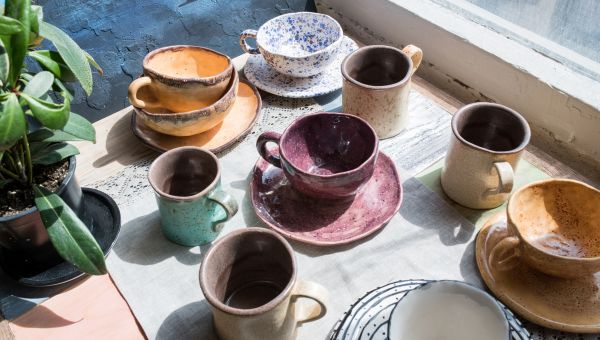
For the coffee or tea lover: Lead-free teapots and mugs
The pleasure of curling up with a cozy cup of cocoa or pot of tea can make handmade pottery feel like the perfect gift. Just be sure to shop ceramics with caution—especially antiques, imported goods, or items from flea markets and street vendors.
“If you spot a beautiful handmade mug at a gift fair—especially one with a shiny finish or bright red, orange, or yellow coloring—it’s important to find out if lead was used in the glazing or to enhance the pigments,” warns Trousdale. A lead-based glaze is often what makes these products shiny. “If you’re storing or serving food or beverages in ceramicware containing lead—especially if the item was not properly made—lead can contaminate your food.” There is no safe level of lead exposure, especially for children, whose brains are still developing.
The swap: Look for pottery with known origins. “Make sure you know where ceramic products were made, how they were made, and whether or not they contain lead,” says Trousdale. Sometimes, the risk of lead exposure can be reduced during manufacturing if the pottery is baked long and hot enough for the lead to become safely bound into the glaze, she explains. But not everyone who creates handmade items is aware there could be lead in their glaze—or what to do about it. Imported ceramics may be especially high-risk because safety standards for lead differ by country.
Shoppers’ pro tip: Some products may contain a label that says, “Not safe for food, decorative use only.” That can be helpful if you see it, but not every product with lead will come with a warning. Unsure about a product’s safety? “If the artist, vendor, or manufacturer can’t tell you about the item’s lead content, you can still gift it,” says Trousdale. “Just make sure the recipient understands that it is meant strictly for decorative purposes and not to serve or store food or drink."
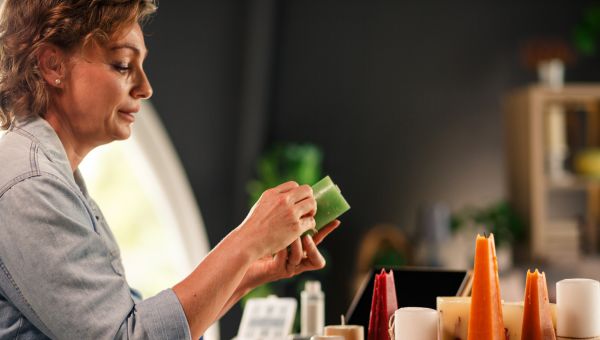
For a cozy holiday home: Non-toxic candles
Candles might offer a warm holiday glow but they are a source of smoke and potentially harmful chemicals. Fragrance chemicals in particular can worsen health conditions like asthma and allergies. Regardless of your sensitivity to fragrances, burning candles can release fine particles that reduce air quality and can make it harder to breathe.
The swap: Many people should simply avoid candles, but it can be hard to resist the urge to share candles during the holiday season. If you buy them, read labels and select products with recognizable ingredients—or opt for the homemade version.
Shoppers’ pro tip: When choosing a less-risky candle, consider these key features:
- Scent: Fragrance-free options are best, but if you must choose a scented candle, look for ones made from a certified non-toxic essential oil.
- Wax: Avoid paraffin, a chemical typically derived from petroleum. Choose a 100-percent natural wax like coconut, soy, or beeswax. Be wary of labels that say things like “soy-based.” The product may still be made mostly of other substances.
- Wick: Opt for cotton, hemp, or wood.

For the emerging artist: Fun, fabulous, and safe craft supplies
If you’ve ever watched a young artist at work, you know the chances of paint-stained skin and the stray taste of glue can be high. It’s best to prepare for the chaos in advance and keep harmful chemicals out of playtime.
The swap: When it comes to art gifts for kids, you can still buy fun supplies, says Trousdale. Just be sure to look for the “AP certification” seal. Materials like crayons and glues are reviewed by the Arts and Creative Materials Institute (ACMI). “Their AP label, which stands for ‘Approved Product,’ tells you that the item is non-toxic according to the ACMI’s standards,” she says.
Shoppers’ pro tip: Many approved products are common, affordable, and accessible. They may already include your favorite brands. But it’s important to check. Doing so can provide some peace of mind. The AP label can let you worry about cleanup instead of chemical exposures when your artist ends up using themself as a canvas.
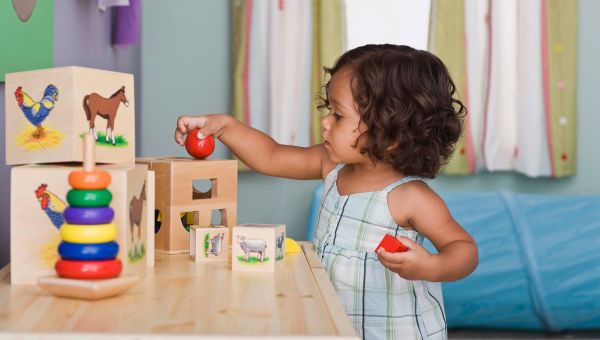
For the future engineer: Better building blocks
There are thousands of building toys on the market, from magnetic blocks to plastic sets to wooden logs. The sheer variety of products can mean more room for hidden health risks. Blocks are made and sold across many countries, each with different safety standards. Even in the United States, toy standards have changed over time. That can mean old or secondhand blocks may pose a greater risk than new products with clear labels.
The swap: “When choosing blocks, you want to look for 100 percent natural materials like wood, bamboo, tree rubber, or silicone as much as possible,” says Trousdale. “Avoid dyes and paints that can chip and come off in children’s mouths or hands.”
Shopper’s pro tip: In general, unless an item was handmade by a loved one using carefully sourced materials, hold off on giving toys that are family heirlooms. Why? Older products may have been manufactured before safety standards were in place. Wait until your future engineer is old enough to appreciate the blocks as a part of family history—or at least until they can avoid putting them in their mouth.

For the baby: Satisfying teether toys, minus the harmful chemicals
A teething toy can be a thoughtful gift for babies (and parents), offering entertainment and relief from pain. “Teethers are a lifesaver,” says Trousdale. “But you want to avoid plastic teethers made from materials like vinyl or PVC plastic, which contain phthalates.”
Phthalates are a group of chemicals, often called plasticizers, that can be found in hundreds of products made and sold in the U.S. “You can find phthalates in children’s products including plastic bibs, soft lunch boxes, and teethers, to name a few,” says Trousdale. These chemicals make plastic items bendable. “That bendy quality can feel great in a teether,” she says, “but they are linked to serious health hazards in children.”
Phthalates disrupt, or interfere with, your body’s hormones. For kids, that can mean short-term impacts to learning and development—and long-term effects like greater risk for cancers, neurological conditions, and reproductive problems.
The swap: Select teethers made from medical- or food-grade silicone or natural rubbers.
Shoppers’ pro tip: Read the package and check all ingredients. “Sometimes it’s not enough to look for ‘phthalate-free’ or ‘BPA-free’ labels,” says Trousdale. Even when manufacturers boast their products are “free from” certain chemicals, other harmful ingredients may end up in the mix. “When parents started boycotting baby bottles containing BPA—followed by state and federal bans—manufacturers made what we call ‘regrettable substitutions,’” she notes. “Many simply shifted from using BPA to BPF or BPS—chemical cousins in the bisphenol family that are linked with similar health effects.”
Instead of thinking about all the chemicals a product doesn’t contain, make sure it comes from healthy materials like natural rubber. Follow instructions on how to clean, care, and replace the product as needed. Make sure your child doesn't have a latex allergy if you are planning to purchase a latex or natural rubber teether.

For imaginative play: PVC-free dolls and stuffed animals
Dolls and stuffies are a staple of holiday gift-giving. But these simple, iconic toys can come with hidden risks, depending on their materials. “Dolls may be made with PVC, materials that contain phthalates, or other substances that children should not put in their mouths,” explains Trousdale.
PVC stands for polyvinyl chloride, also known as vinyl. It’s a flexible plastic found in a range of plastic products. Vinyl chloride, the main ingredient in PVC, is a known cancer-causing agent. Other potential health concerns from PVC exposure include developmental disorders, liver disease, and hormone disruption.
The swap: Look for dolls and stuffies made from cloth materials, like cotton and wool. Be sure to read the tag to learn about the fabric blend and to check for any ingredients you don’t recognize.
Shoppers’ pro tip: “Opting for cloth can help you avoid toxic substances,” says Trousdale. “Cloth dolls have the added benefit of being easily washable.” CEHN offers a fact sheet on how to shop for safer dolls.

Finding the right balance
It can be tough to navigate holiday shopping while considering safety, Trousdale acknowledges. There are pros and cons for every product, and that’s where you have to weigh your priorities as the gift-giver. If you’re buying for kids, there are a few things to think about, she advises: “Is it educational? Is it going to help their growth and development? Or is the toy just plain fun?” Sometimes the fun or educational aspect of a toy might win out over other considerations.
Just be sure to prioritize non-toxic products for the youngest children (babies to those 3 years of age), says Trousdale. These children are especially vulnerable to the risks of chemical exposures because they are more likely to put things in their mouths—and because so much brain and body development happens before the age of 3. “Teach all kids to wash their hands after playtime and before eating,” she adds.
It’s worth noting that some products billed as non-toxic may be more expensive than conventional items or not available at all stores, requiring more cost and effort to find them. Despite their higher price tag, products and toys made with high-quality materials tend to be durable, which often justifies the extra investment if you are able to make it.
This article has been written in collaboration with the Children's Environmental Health Network (CEHN), a national nonprofit with the mission of protecting all children from environmental health hazards and promoting a healthy environment.
Read more from this series, including ways to manage asthma in children, how to protect your children from asthma at school, best practices for keeping your home free of asthma triggers, and the connection between asthma and stress.

U.S. Food and Drug Administration. Per- and Polyfluoroalkyl Substances (PFAS). Content current as of: May 31, 2023.
U.S. Environmental Protection Agency. PFAS Explained. Last Updated On October 25, 2023.
Centers for Disease Control and Prevention. Per- and Polyfluorinated Substances (PFAS) Factsheet. Page last reviewed: May 2, 2022.
NRDC. “Forever Chemicals” Called PFAS Show Up in Your Food, Clothes, and Home. April 12, 2023.
U.S. Environmental Protection Agency. Our Current Understanding of the Human Health and Environmental Risks of PFAS. Last Updated On June 7, 2023.
Snyder, Christa. How to Season and Maintain a Cast Iron Pan. NC State University Cooperative Extension. February 17, 2023.
National Institute of Environmental Health Sciences. Bisphenol A (BPA). Last Reviewed: August 31, 2023.
Centers for Disease Control and Prevention. Bisphenol A (BPA) Factsheet. Page last reviewed: April 7, 2017.
Mayo Clinic. What is BPA, and what are the concerns about BPA? March 24, 2023.
U.S. Food and Drug Administration. Bisphenol A (BPA): Use in Food Contact Application. Content current as of: April 20, 2023.
NYC Health. Health Department Issues Lead Warning to New Yorkers: Avoid Using Traditional Ceramic Ware for Food and Drinks; May Contain Lead. September 28, 2021.
Fralick M, Thomspson A, Mourad O. Lead toxicity from glazed ceramic cookware. CMAJ. 2016;188(17-18):E521-E524.
Lashbrook, Angela. Why You Should Test Your Vintage or Imported Dishes for Lead ASAP. Consumer Reports. October 14, 2021.
U.S. Food and Drug Administration. Questions and Answers on Lead-Glazed Traditional Pottery. Content current as of: October 27, 2017.
U.S. Food and Drug Administration. Guidance for Industry: Safety of Imported Traditional Pottery Intended for Use with Food and the Use of the Term "Lead Free" in the Labeling of Pottery/Proper Identification of Ornamental and Decorative Ceramicware. Content current as of: September 20, 2018.
U.S. Environmental Protection Agency. Sources of Indoor Particulate Matter (PM). Last Updated On September 25, 2023.
Andersen C, Omelekhina Y, Rasmussen BB, et al. Emissions of soot, PAHs, ultrafine particles, NOx, and other health relevant compounds from stressed burning of candles in indoor air. Indoor Air. 2021;31(6):2033-2048.
Aurisano N, Huang L, Milà I Canals L, Jolliet O, Fantke P. Chemicals of concern in plastic toys. Environ Int. 2021;146:106194.
Williams, Alan. Many second hand plastic toys could pose a risk to children’s health, study suggests. University of Plymouth. January 26, 2018.
Wang Y, Qian H. Phthalates and Their Impacts on Human Health. Healthcare (Basel). 2021;9(5):603. Published 2021 May 18.
Centers for Disease Control and Prevention. National Biomonitoring Program. Phthalates Factsheet. Page last reviewed: April 5, 2021.
Harvard T.H. Chan School of Public Health. Why phthalates should be restricted or banned from consumer products. March 10, 2021.
U.S. Food and Drug Administration. Phthalates in Food Packaging and Food Contact Applications. Content current as of: July 21, 2023.
Asimakopoulos AG, Elangovan M, Kannan K. Migration of Parabens, Bisphenols, Benzophenone-Type UV Filters, Triclosan, and Triclocarban from Teethers and Its Implications for Infant Exposure. Environ Sci Technol. 2016;50(24):13539-13547.
State of New Jersey. Department of Human Services. Office of Prevention of Developmental Disabilities. PVC – a major source of phthalates. Accessed December 12, 2023.
U.S. Environmental Protection Agency. Understanding Exposures in Children’s Environments. Last Updated On July 13, 2023.
More On


video

article

slideshow


video


video
